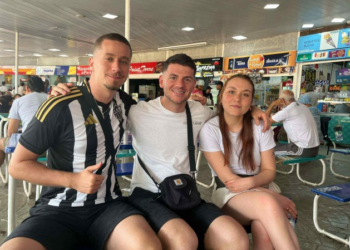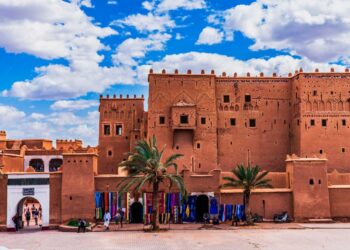Lavender Fields in Cunha are painting of purple a very special landscape. One of the cares is to prepare the soil well for planting.


“I went to Provance, visited some places, farms and distilleries to understand a little more of the business and what has been done with the lavender,” says Fernanda. Provance is a region of southeastern France, known worldwide for its extensive lavender fields. As soon as I arrived, was possible to find the main inhabitants of these fields: the Siriemas and the bees. A flowery garden is the best place for them.
One of the most important precautions is to prepare the soil well for planting. Work for José Carlos Rodrigues, who has in his head the exact measurement of the pit to ensure the development of plants. In each cave, is used 150 grams of limestone, 70 grams of phosphorus and 50 pies of neem. And the planting only occurs after a few days. “It will incorporate the product on the ground, there the plant will develop better,” he says. A spacing of 50 centimeters between plants and one meter between rows was used.


For Fernanda, such productivity is directly related to the location of Cunha, due to the altitude of 1,200, 1,300 meters and the annual temperature that varies from 5 to 25 degrees. The harvest crop is done once a week and, on that day, Dilza Rodrigues has a specific job. “I come in front of you, cutting off the dried flowers, and then I chafe to make the sachets to put in the wardrobe and the drawers,” she says. After Dilza passes, Luis and Omair come in the sequence, picking the lavender that will turn oil. The process has some little secrets.


Produção de lavanda no interior de SP atrai turistas e gera renda
Campos de lavanda em Cunha (SP) tingem de roxo uma paisagem bastante especial. Um dos cuidados é preparar bem o solo para o plantio.
Um lugar bonito por natureza. Encravado nas montanhas da Serra do Mar, em São Paulo, o município de Cunha é famoso por suas cachoeiras, suas cerâmicas vitrificadas e pela vista que, em dias claros, se estende até a praia. Há quatro anos, um novo item se incorporou a essa paisagem. Ideia da publicitária Fernanda Freire, que em 2012 resolveu fazer algo diferente na vida e plantou 40 mil pés de lavanda em três hectares do seu sítio.
“Fui para a Provance, visitei alguns sítios, fazendeiros e destilarias para entender um pouco mais do que era o negócio e o que se fazia com a lavanda”, conta Fernanda. A Provance é uma região do sudeste da França, conhecida mundialmente pelos seus extensos campos de lavanda. Logo de cara, foi possível encontrar as principais moradoras desses campos: as siriemas. E as abelhas. Um jardim florido é um prato cheio para elas.
Um dos cuidados mais importantes é preparar bem o solo para o plantio. Trabalho para seu José Carlos Rodrigues, que tem na cabeça a medida exata da cova para garantir o desenvolvimento das plantas. Em cada cova, vão 150 gramas de calcário, 70 gramas de fósforo e 50 tortas de nim. E o plantio só ocorre após alguns dias. “Ela vai incorporar o produto na terra, aí a planta vai desenvolver melhor”, conta. Foi usado um espaçamento de 50 centímetros entre plantas e um metro entre linhas.
A lavanda não suporta excesso de água, por isso, os terrenos devem ser bem drenados. Em alguns casos houve até a mistura de areia na terra, como na plantação do Henry Villar. “A lavanda naturalmente cresce em regiões mais secas. Ela até tolera temperaturas mais altas, desde que sejam secas. Aqui no Brasil, o verão é quente, mas é um calor úmido e chuvoso. Um dos maiores inimigos da lavanda aqui no Brasil é a chuva”, conta ele. Henry é um cidadão do mundo, já viveu em vários países e há quase três anos escolheu Cunha para morar.
O sítio foi comprado em 2015, já com toda a infraestrutura que envolve a produção de lavanda, um investimento aliado à contemplação. Na lojinha que fica na entrada do sítio, uma amostra da transformação do perfume do campo em diversos produtos. Todos fabricados pelas mãos do próprio Henry, que além da agricultura vem aprendendo outras atividades depois que adquiriu a lavoura de lavanda.
Juliana Felipe é a engenheira química responsável pela destilação da lavanda colhida na primeira propriedade da reportagem. Para extrair um litro de óleo são necessários 160 quilos de lavanda. Para Fernanda, tamanha produtividade tem relação direta com a localização de Cunha, devido a altitude de 1.200, 1.300 metros e a temperatura anual que varia de 5 a 25 graus.
A colheita é feita uma vez por semana e, nesse dia, dona Dilza Rodrigues tem um trabalho específico. “Eu venho na frente, cortando as florzinhas secas, depois eu debulho para fazer os sachês para colocar no guarda-roupa e nas gavetas”, conta. Depois que a dona Dilza passa, o Luis e Omair vêm na sequência, fazendo a colheita da lavanda que vai virar óleo. E o corte tem lá seus segredinhos.
Como a beleza desse lugar também é apreciada por turistas, a colheita é feita de forma escalonada. O poder de atração da lavanda é tão grande que a plantação é um dos lugares mais visitados pelos turistas que vêm a Cunha. Cerca de três mil pessoas se deslocam até aqui nos fins de semana para apreciar esses campos. Muita foto, muita selfie e até beijos românticos.






